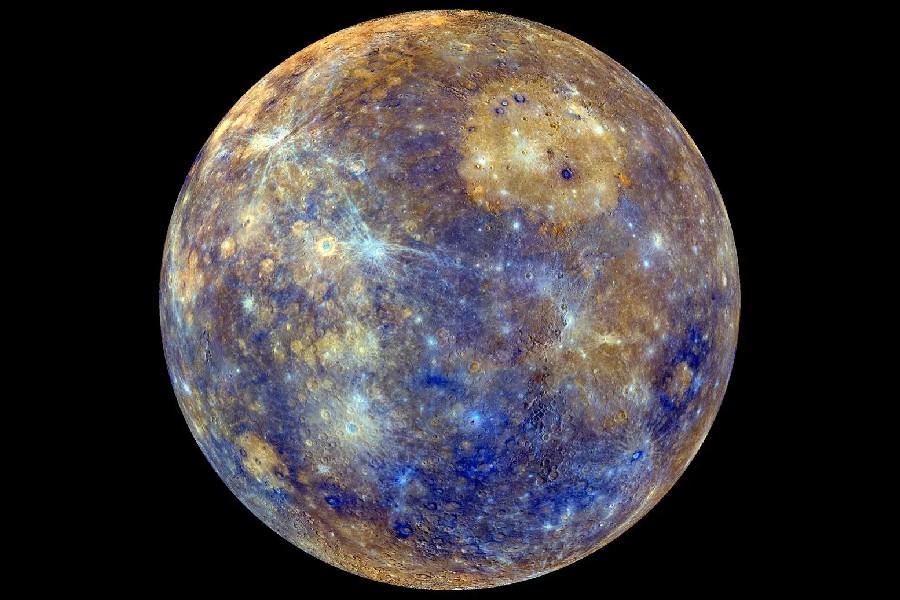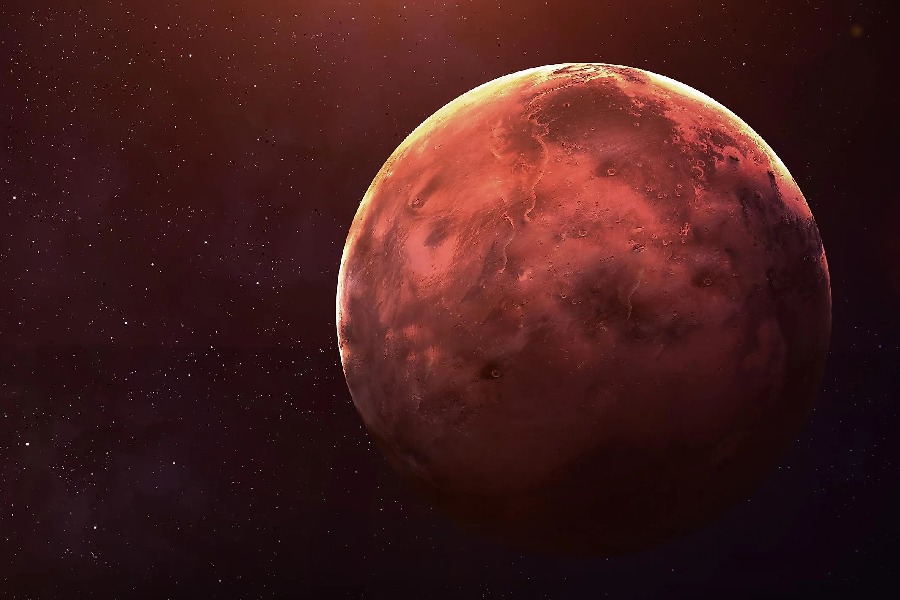While tiny Mercury has always been considered a full-fledged planet alongside neighbors Venus, Earth, and Mars in our solar system, new parameters raise questions.
We will examine Mercury’s size, orbital path, gravitational impact, and formation history in the context of the evolving definitions of “planet” in astronomy.
Is Mercury a planet? This question has been debated for years among astronomers as our understanding of planetary definitions evolves. With the discovery of new solar systems and exoplanet data, the criteria for what constitutes a true planet are changing.
A key consideration is whether an updated definition still classifies Mercury as deserving of planetary status or if it should be relegated to another astronomical category.
The debate brings larger implications about our changing views of our solar system based on ongoing astronomical revelations. Could Mercury be at risk of losing its long-held planetary standing?

Is Mercury a Planet?
Is Mercury a planet? Mercury is unequivocally a planet, being the smallest in our solar system and situated closest to the Sun. As a rocky, terrestrial, celestial body, it lacks a substantial atmosphere, subjecting it to extreme temperature fluctuations – ranging from scorching heat to frigid cold.
Completing an orbit around the Sun in approximately 88 Earth days, Mercury’s distinctive characteristics make it a fascinating object of study for astronomers and planetary scientists.
Its proximity to the Sun contributes to Mercury’s unique features. Despite its diminutive size, Mercury’s place in our cosmic neighborhood adds valuable insights into the diverse nature of planetary bodies.
History of Mercury Classification
Early perspectives on Mercury
The history of Mercury’s classification as a planet begins in ancient times. Early astronomers were able to observe Mercury’s motions as it wandered across the sky relative to the fixed background stars.
However, these early perspectives did not have a conception of “planets” as we understand them today – everything that moved independently against the starry backdrop was considered a wandering star.
Shift towards planetary status
A shift began in the 1600s as Galileo was able to study Mercury with the newly invented telescope. He discovered that, like the Moon orbiting Earth, Mercury exhibited phases, suggesting that it orbits the Sun rather than Earth itself.
This discovery was an important step towards categorizing Mercury as a planet rather than merely a wandering star.
Modern definitions confirming its status as a planet
Further cementing Mercury’s planetary status came with the modern definitions put forth by the IAU in the 1900s, which emphasized a key aspect of planets. This key aspect was objects that orbit the Sun directly rather than orbiting other planets.
With this definition, Mercury’s small size did not prevent its categorization as a full classic planet alongside the other planets of our solar system.
Emerging questions around planet definition
However, as exoplanet discoveries proliferated in the 2000s, definitions began to be challenged and revised. Specifically, the IAU introduced the criterion that planets must “clear the neighborhood” around their orbital path.
With this shift, questions have emerged around whether tiny Mercury truly qualifies as a planet in the modern understanding or if it should be relegated to a different categorization altogether.
An Official Definition of “Planet” Established in 2006
New parameters established
Why is Mercury a planet? As more objects were discovered in our solar system and around other stars, the International Astronomical Union (IAU) revisited the definition of “planet” in 2006, where several new parameters were established.
So, as mentioned above, the key ones were that a planet must orbit the Sun directly and must have sufficient mass to be rounded by its gravity. Additionally, it must have “cleared its neighborhood” of other orbiting objects around its orbit.
Implications for Pluto and Mercury
The implications of this new definition immediately caused controversy regarding Pluto’s status. With Pluto’s small size, elliptical orbit, and shared space with frozen objects in the Kuiper belt, it no longer qualifies.
However, Mercury seemed to meet the new standards. While tiny in size, it does orbit the Sun directly and is spherical from its gravity.
So after the 2006 decision, Mercury retained its planetary status that it had held since antiquity while more distant Pluto was reclassified as a dwarf planet.
Ongoing questions around Mercury
But questions have lingered even about tiny Mercury meeting the rigorous parameters for planethood set out by the IAU in 2006. There is uncertainty about what further discoveries may mean for potentially revising the definitions yet again in the future.

Physical Characteristics of Mercury – What Does Mercury Look Like?
Small size
Mercury is the smallest planet, only slightly larger than Earth’s moon. It has a diameter of 3,032 miles. This means it does not have significant gravity or atmosphere for its size. Mercury is only 40% larger in diameter than our Moon.
Acquiring more detailed scans and imagery of Mercury presented challenges for space agencies compared to other planets, given its tiny proportions relative to 4.8 billion-year-old Earth at 7,917 miles across.
Low mass and density
Mercury’s mass is only 5.5% of Earth’s. With no atmosphere, temperatures vary wildly from 800°F days to -290°F nights. It has cratered highlands and smooth volcanic plains.
Uniquely, Mercury has a huge iron core making up 60% of its mass, contributing to its high density. Composed of 70% metals, it is one of the densest planets.
Disproportionately large iron core
Mercury’s huge, dense iron core spanning 1,800 miles is evidence it was hit by a massive collision during formation. This stripped away lighter outer layers, leaving a planet dominated by its core. Research suggests early volcanic activity and magnetic fields.
Minimal gravity and orbital impact
It orbits the Sun faster than any planet, completing three rotations every two orbits. So a single day lasts two Mercurian years.
The extreme conditions likely preserved early planetary conditions from formation 4.5 billion years ago. With its 88-day orbit, Mercury experiences rapidly shifting conditions as it alternates between being closest and most distant from the Sun.
Other notable characteristics
The extreme temperatures and solar winds have eliminated any substantial ancient atmosphere Mercury may have had. Yet it still has an exosphere of atoms blasted off its surface. Observations continue to strengthen the case for frozen water ice in craters on Mercury’s poles. This hints at a more complex composition.
Standing out among Solar System bodies
So while tiny, Mercury stands out among Solar System objects for these special characteristics dictated by its extreme proximity to the Sun.
Its small size yet huge density and metallic core make for intriguing mysteries. Combined with its oval, quick orbit, these features lead to questions about the planet’s formation and evolution.
Comparisons to Other Planets in the Solar System
Small size
When comparing Mercury to other planets, its diminutive size stands out. At 3,032 miles in diameter, it is the smallest behind Mars at just over half the size of Earth. Mercury lacks key features found elsewhere, like atmospheres and moons.
Disproportionately large iron core
Although small in size, Mercury boasts the largest core-to-planet ratios. Its huge iron core constitutes 60% of Mercury’s total mass, dwarfing all other planetary cores.
This includes Earth’s core, which takes up just 15-17% of its mass. This also leads to its abnormally high density, which exceeds Earth, Venus, and Mars.
Extreme orbital eccentricity
Mercury’s eccentric, oval-shaped orbital path also makes it unique as the most elliptical planetary orbit in our solar system.
Insights into planetary formation
With its scorched landscape containing possible water ice caps, resilient magnetic field despite the small size, and extreme temperature shifts, Mercury provides insights into early planet formation close to stars. No other planet replicates these insights that Mercury provides.
Retaining planetary status
Its array of unusual planetary traits for a body its size helps explain why despite questions from new astronomical discoveries, Mercury retains its classification as the smallest, and in some ways strangest, major planet orbiting our Sun.
Closest Planet to the Sun
Extreme climate conditions
As the closest planet to the Sun, Mercury experiences extreme conditions that uniquely impact its characteristics. Orbiting just 36 million miles from the Sun on average, heat shapes the rocky landscape. Temperatures reach 800°F on its Sun-facing side.
Temperature variations
This makes Mercury’s temperature variation the largest in the Solar System, fluctuating by over 1,000 degrees between zones on the planet’s surface.
These heat extremes, coupled with intense solar radiation, contributed to the planet’s small size over time as lighter elements evaporated.
Impacts on characteristics
The intense solar wind also seeds the tenuous exosphere detected around Mercury composed of atoms perpetually blasted off its surface. In sum, the smallest major planet owes its array of odd superlatives to Mercury’s enduring status as the innermost world. These odd superlatives include a severely elongated orbit and disproportionately huge metallic core.
Mercury receives the full brunt of the Sun’s energy just dozens of millions of miles away. This results in the odd superlatives of Mercury’s elongated orbit and huge metallic core.
Conclusion
So, is Mercury a planet? We hope you now better understand the complexities and nuance in this long-standing debate that recent astronomical discoveries have reignited.
This article has highlighted how Mercury meets the criteria for a major planet, despite its small size and lack of atmospheres and moons. This is the current scientific view, though it could potentially change.
But new findings in exoplanetary research and refinements in definitions could one day see Mercury’s long-held status in doubt or even revocation as our perceptions evolve.
Regardless, as the Solar System’s innermost world, Mercury is exposed to the Sun’s full intensity with scorched landscapes and extreme temperature swings. The peculiar small body known since antiquity as a wandering star still stands alone in many respects.
And for today, Mercury remains classified among our star’s eight official planets, reminding us that even the smallest worlds can have outsized influence over fundamental questions.
